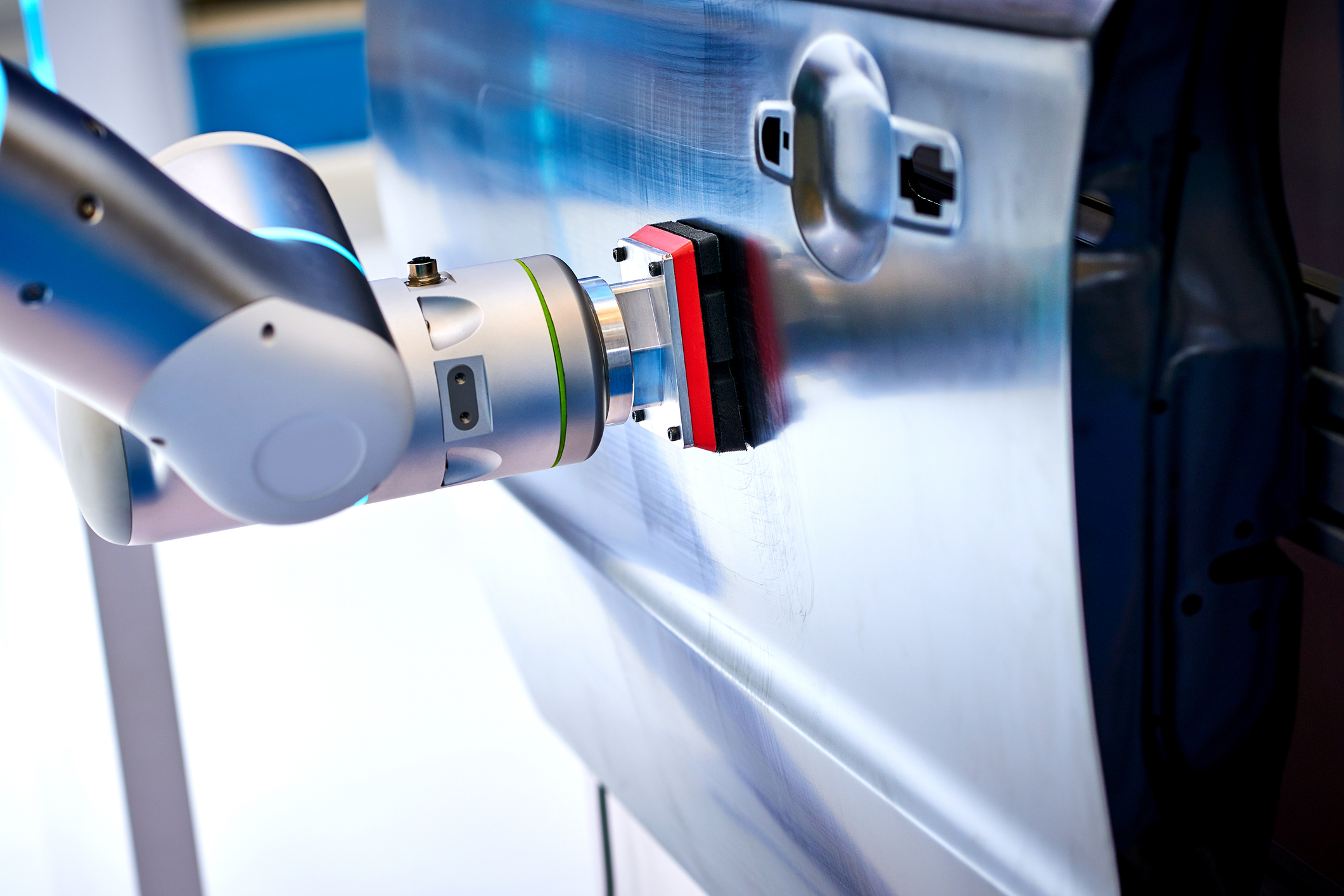Industrial Manipulators in the Automotive Industry: Driving Safety and Efficiency

Why Automotive Manufacturers Are Turning to Industrial Manipulators
Picture this: on a busy automotive assembly line, workers lift heavy transmissions, handle large body panels, or maneuver delicate glass windshields into place. Every second counts, but so does safety. Without the right equipment, repetitive lifting and awkward positioning put workers at risk while slowing down production.
That’s where industrial manipulators in the automotive industry come in. These innovative tools are reshaping the way car manufacturers handle materials, making operations faster, safer, and more precise.
If your automotive facility is still relying on outdated methods of material handling, now is the time to see how industrial manipulators can give you a competitive edge.
What Are Industrial Manipulators?
An industrial manipulator is a mechanical device that helps operators lift, move, and precisely position heavy or unwieldy objects. Unlike simple hoists or cranes, manipulators give the operator direct, ergonomic control—allowing them to rotate, tilt, or place parts with pinpoint accuracy.
In the automotive sector, manipulators are designed with custom end-effectors to safely grip components like:
- Engines and transmissions
- Car doors and body panels
- Exhaust systems
- Glass windshields and windows
- Wheels, tires, and suspension parts
By combining human dexterity with mechanical strength, manipulators make complex handling tasks effortless.
Why Industrial Manipulators Are Essential in Automotive Manufacturing
1. Safety First
Automotive parts are often heavy, sharp-edged, or awkwardly shaped. Relying solely on manual lifting can lead to injuries, higher workers’ compensation claims, and costly downtime. Industrial manipulators eliminate these risks, ensuring compliance with workplace safety standards like OSHA.
2. Faster Assembly Lines
On high-volume automotive production lines, every second of downtime counts. Manipulators reduce cycle times by allowing a single operator to quickly and safely handle tasks that once required two or three workers.
3. Precision and Quality Control
From aligning windshields to positioning engines, accuracy matters. Manipulators allow millimeter-level precision, which translates to fewer defects, reduced rework, and consistent quality across every vehicle produced.
4. Versatility for Multiple Applications
Whether it’s moving steel body panels, delicate electronics, or bulky tires, manipulators can be equipped with suction cups, grippers, or clamps to fit any job. This adaptability makes them invaluable in the ever-evolving automotive industry.
5. Cost Savings and ROI
While purchasing manipulators is an investment, the return on investment (ROI) comes quickly—through fewer injuries, reduced product damage, and higher throughput. Many automotive companies report achieving ROI in less than two years.
Key Automotive Applications of Industrial Manipulators
Industrial manipulators can be integrated into nearly every stage of automotive production:
1. Engine and Transmission Handling
Engines and gearboxes are among the heaviest parts on the line. Manipulators allow safe lifting, rotating, and positioning into engine bays or onto subassemblies without strain on workers.
2. Glass Installation
Windshields and side windows must be handled with care to prevent cracks or misalignment. Manipulators with vacuum suction ensure precise placement, reducing waste and improving vehicle safety.
3. Body Panel Positioning
Doors, hoods, and trunk lids are large and awkward to maneuver. With manipulators, operators can align these panels perfectly, streamlining the painting and assembly process.
4. Tire and Wheel Assembly
Heavy tires and wheels can be quickly positioned with manipulators, reducing the repetitive strain injuries associated with manual lifting.
5. Interior Assembly
Seats, dashboards, and other bulky components are easier to install when supported by manipulators, ensuring proper alignment and a smooth production flow.
Industrial Manipulators vs. Automotive Robots
Many people wonder: aren’t industrial robots already handling automotive production? The answer is yes—but robots and manipulators serve different roles.
- Robots: Fully automated, ideal for repetitive, structured tasks such as welding or painting.
- Manipulators: Semi-automated, human-guided, perfect for tasks requiring judgment, adaptability, and ergonomic support.
In fact, many modern automotive plants use both technologies side by side, creating hybrid production lines where manipulators handle complex placement tasks while robots manage repetitive actions.
The Competitive Advantage of Industrial Manipulators in the Automotive Industry
Global automakers face intense competition, tight margins, and strict safety standards. To stay ahead, manufacturers must balance speed, safety, and quality.
Here’s how industrial manipulators provide that edge:
- Boosting worker productivity by reducing fatigue.
- Ensuring consistent quality through precision handling.
- Meeting safety standards and minimizing downtime.
- Improving flexibility to handle frequent model changes and part variations.
In short, manipulators help automotive companies build cars faster, safer, and smarter.
Future Trends: Smart Manipulators in Automotive
As the automotive industry embraces Industry 4.0, manipulators are evolving too. Future-ready manipulators may include:
- Sensors and AI integration for adaptive load handling.
- IoT connectivity for predictive maintenance and performance monitoring.
- Collaborative designs that seamlessly integrate with cobots (collaborative robots).
These innovations will make automotive production lines even more efficient and resilient.
From handling heavy engines to precisely installing fragile windshields, industrial manipulators are indispensable in the automotive industry. They improve safety, boost productivity, and ensure the consistent quality that car buyers expect.
If your automotive operations still rely on outdated lifting or handling methods, you risk falling behind competitors who are already reaping the benefits of this technology.
Is your automotive facility ready to upgrade efficiency, safety, and quality? Contact our team today to discover the best industrial manipulator solutions for your production line—and drive your business into the future of manufacturing.

